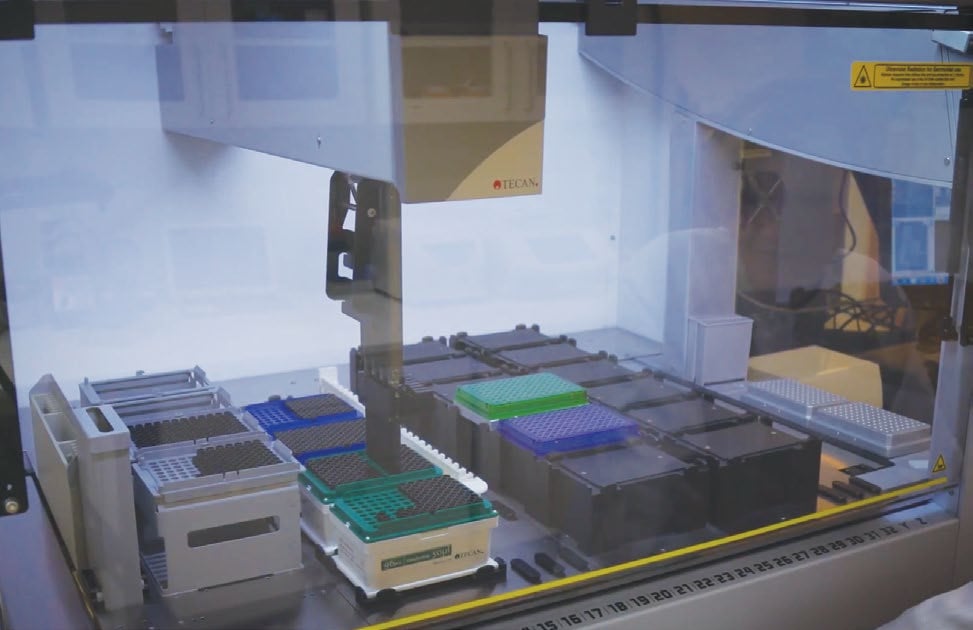Microbiome research is still in its infancy, with little currently understood about the role micro-organisms play in both maintaining our day-to-day health and the genesis of disease. Researchers at the Karolinska Institute are using next generation sequencing to establish a baseline of the microbiota present in healthy individuals as a starting point for the development of new therapeutic strategies for a wide range of diseases.

The human microbiome – the collection of micro-organisms living on or within our bodies – plays a vital role in our health, from assisting in the digestion of foodstuffs within our gut to causing or preventing certain diseases or cancers. Despite this, the composition and maintenance of the microbiome is poorly understood. Although some progress has been made in this area over the last decade, a majority of current research initiatives are directed towards the gut or skin microbiomes, with little focus on other tissues and biofluids.
The Centre for Translational Microbiome Research (CTMR) – a collaboration between Sweden’s Karolinska Institute, Science for Life Laboratory (SciLifeLab) and Ferring Pharmaceuticals – and the Human Microbiome Translational Research Program (HMTRP) aim to better understand the contribution of the interplay of microbial populations within the gastrointestinal tract. However, microbiota are also thought to play a significant role in women’s reproductive health, and so we are looking into this field too. The major problem with this is that, in order to understand what is abnormal, first we need to know what is ‘normal’. Because so little comprehensive research has been done in this area, a ‘normal’ baseline of the micro-organism population has not been established, and so we have just begun a large study to better define this.”
"Human error is one of the greatest risks to results in any lab, and so I am a big fan of using automation to reduce hands-on time as much as possible."
“When samples arrive in our laboratory, we begin by extracting and aliquoting the DNA using a Freedom EVO® workstation. The resulting extracts are quantified using a Spark® reader, then one aliquot is sent to the biobank, and a second is used for sequencing. Most of our studies rely on 16S rDNA sequencing human microbiome to human health, with the goal of developing novel therapies. Its current focus is on the microbiomes of the gut and the female reproductive organs. Maike Seifert, Laboratory Engineer at CTMR, explained the center’s approach: “The gut microbiome was the first microbial population to be investigated, and initiatives such as the Human Microbiome Project mean we are now beginning to understand the composition and to identify the micro-organisms present, which starts with DNA normalization. This is performed by our Fluent® Laboratory Automation Solution, which uses the concentration data from the Spark to calculate the exact pipetting volumes to achieve normalization. The system then performs the library preparation, generating sequencingready samples that can be run on our MiSeq™ platform.”
Maike continued: “We chose the Fluent system for this application because our previous liquid handling platform was not able to perform eight-channel pipetting. This meant that normalization had to be done one sample at a time, taking two and a half hours per plate and creating a major bottleneck in our workflow. In comparison, our Fluent can perform the same normalization in just 15 minutes, saving a huge amount of time. Another benefit, which we hadn’t appreciated until we began validating the system, is that the Fluent pipettes incredibly precisely; I’ve never seen an automated platform anywhere near as accurate – it’s wonderful. This will be particularly useful for whole genome sequencing, which requires extremely precise amounts of DNA from very low concentrations of starting material – as little as 0.2 μg/μl – to achieve high quality libraries.”
“Using the Fluent has certainly improved the quality of our library preparations, and our laboratory staff are happier. It has also virtually eliminated the risk of pipetting errors during normalization – a task that requires a lot of focus to perform manually. Human error is one of the greatest risks to results in any lab, and so I am a big fan of using automation to reduce hands-on time as much as possible, especially for high throughput studies. We currently perform one sequencing run a week, which could potentially be done manually, but using the Fluent workstation is better for both our staff and samples, and will allow us to increase this to two runs a week as our sample numbers increase,” Maike concluded.
To find out more about Tecan’s genomics solutions, visit www.tecan.com/genomics
To learn more about the Centre for Translational Microbiome Research, go to ki.se/en/research/centre-fortranslational-microbiomeresearch-ctmr









